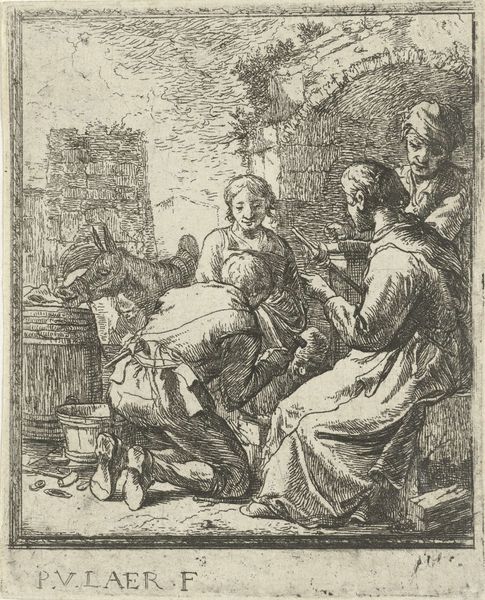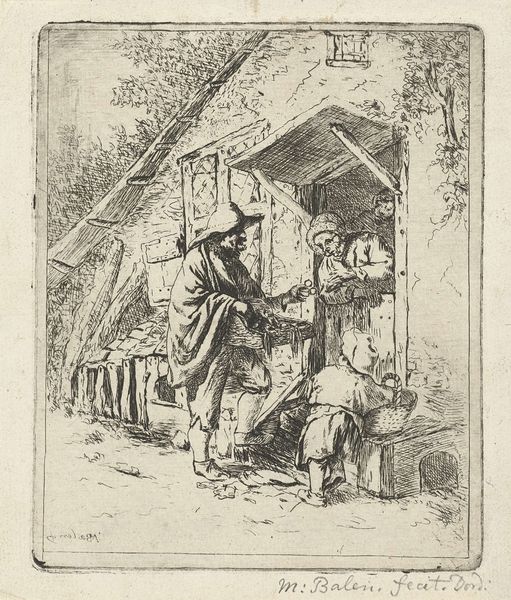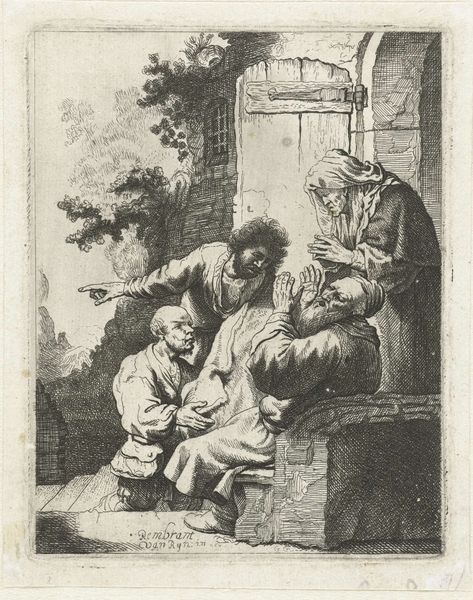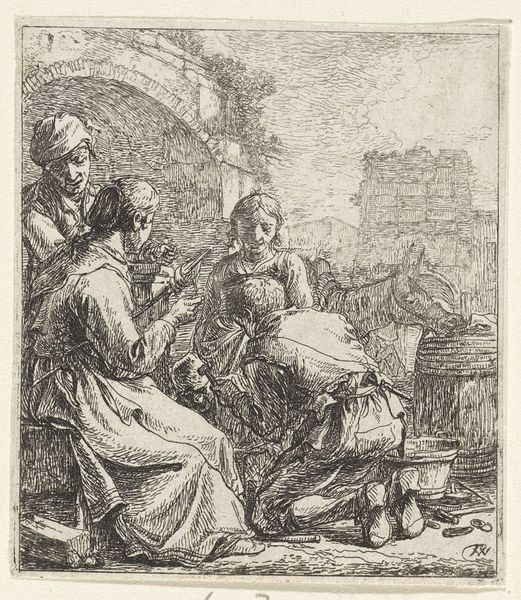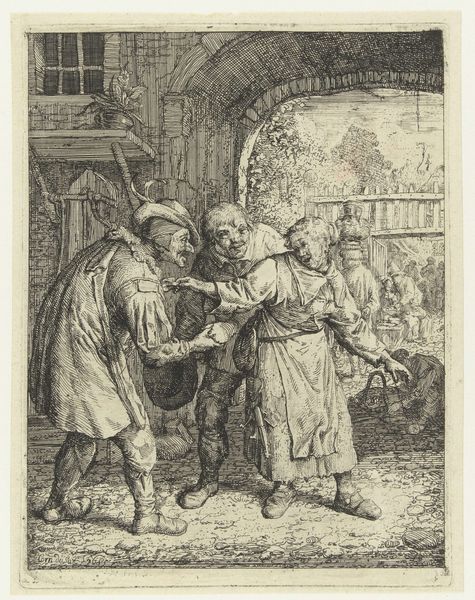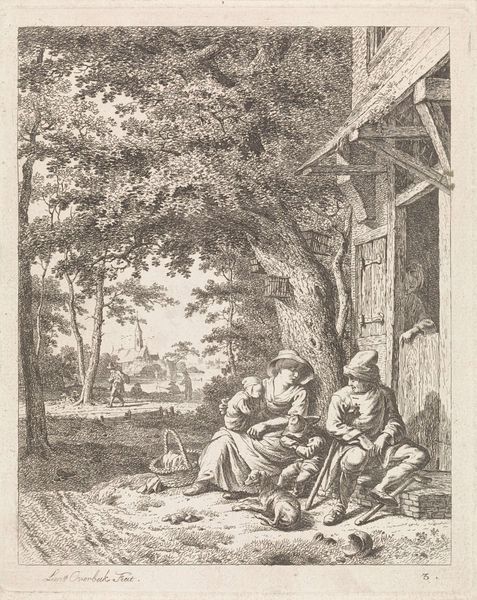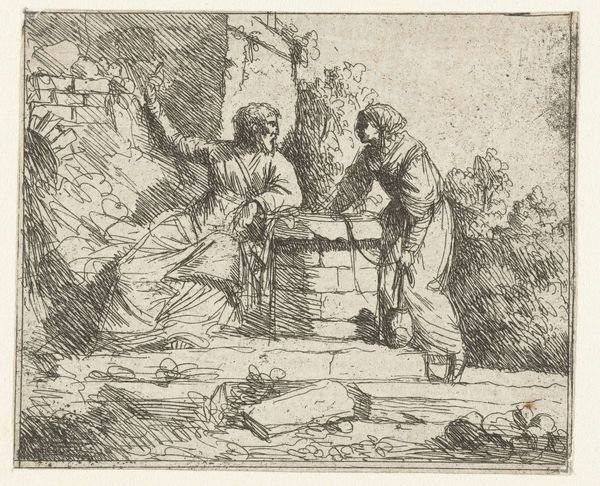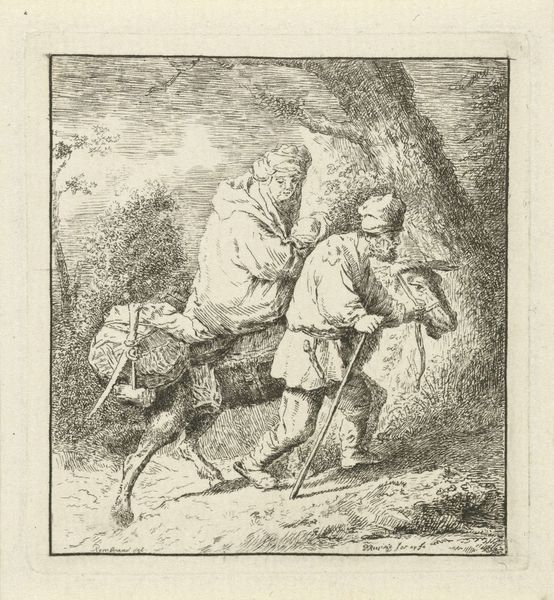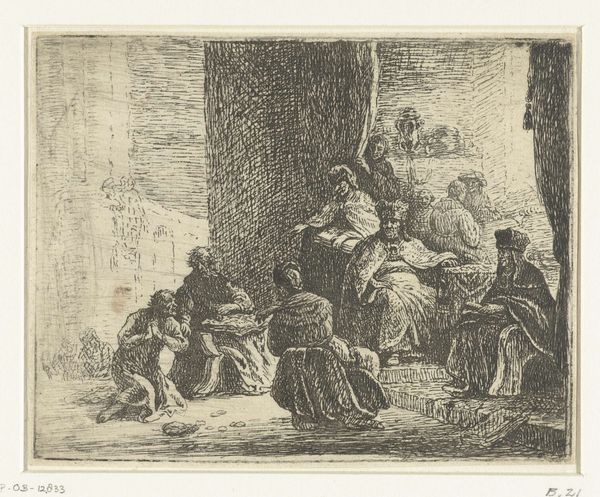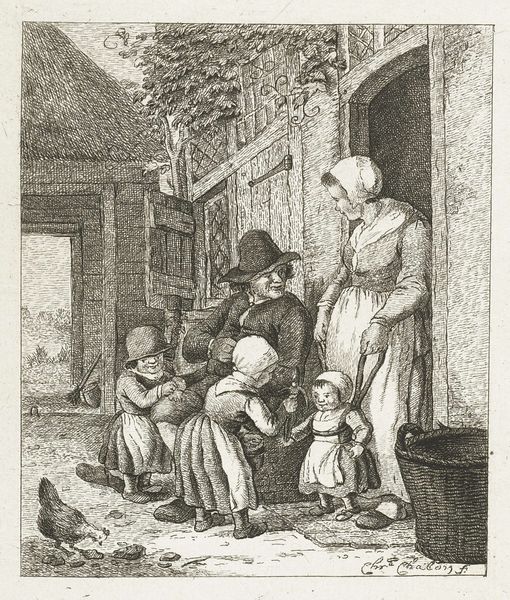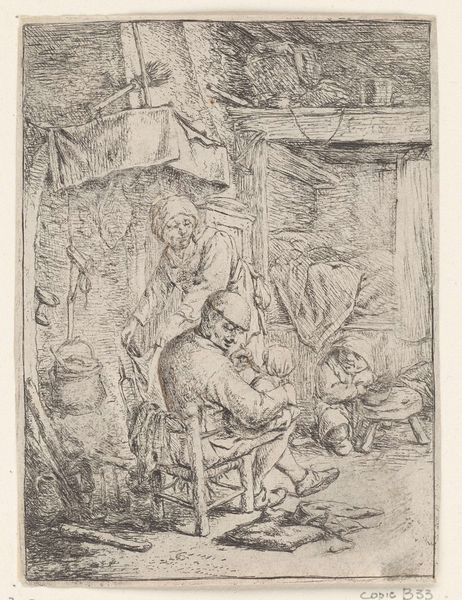
print, etching
#
narrative-art
#
baroque
# print
#
etching
#
landscape
#
figuration
#
genre-painting
#
realism
Dimensions: height 110 mm, width 119 mm
Copyright: Rijks Museum: Open Domain
Curator: Here we have "Woman Carrying Two Baskets," an etching created sometime between 1626 and 1677 by Thomas Wijck, currently held in the Rijksmuseum collection. It presents us with a genre scene populated by intriguing characters. Editor: Immediately, I notice a juxtaposition of rest and labor. The seated figure is quite prominent, set against the backdrop of what appears to be ruins, while the woman struggles under a load, heading toward… where exactly? Curator: That's the core tension, isn't it? The print operates on multiple registers. It’s interesting to see how Wijck engages with contemporary issues around class and labor in the 17th century. This work invites questions about societal roles. Is he showing the burden placed on women? Or merely depicting everyday life? Editor: Consider the basket atop the woman’s head. It echoes ancient fertility symbols – burdens of fruit associated with seasonal cycles. Does her position tell us how to view female contribution through cultural memory? Is her path pre-ordained? Curator: Certainly, these objects offer significant clues into understanding her place. I see the inclusion of a boy nearby adding to her existing familial roles and obligations, particularly concerning motherhood. Perhaps he signifies a lineage or future. What do you make of the seated man and the child looking off to the right? They could function as commentary from a patriarchal society where men are free to pause. Editor: That's very plausible. I see something deeper, a link between social expectations and eternal imagery, particularly the ruined architecture hinting at vanitas. They create symbolic contrasts. Curator: The background structures definitely establish this piece as a study of space. The people populate this open, ruined setting. But for whom and at what cost? And to what extent does Wyick's perspective inform this scene? Editor: We are compelled to consider that. And as we reflect, there’s an acknowledgment that symbols, even across eras, invite contemplation of identity and duty. Curator: Yes, a reflection, and that considering these complex historical factors helps decode some elements of the social dynamics represented.
Comments
No comments
Be the first to comment and join the conversation on the ultimate creative platform.
